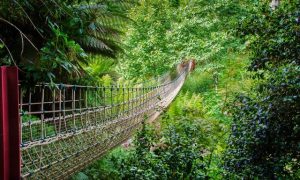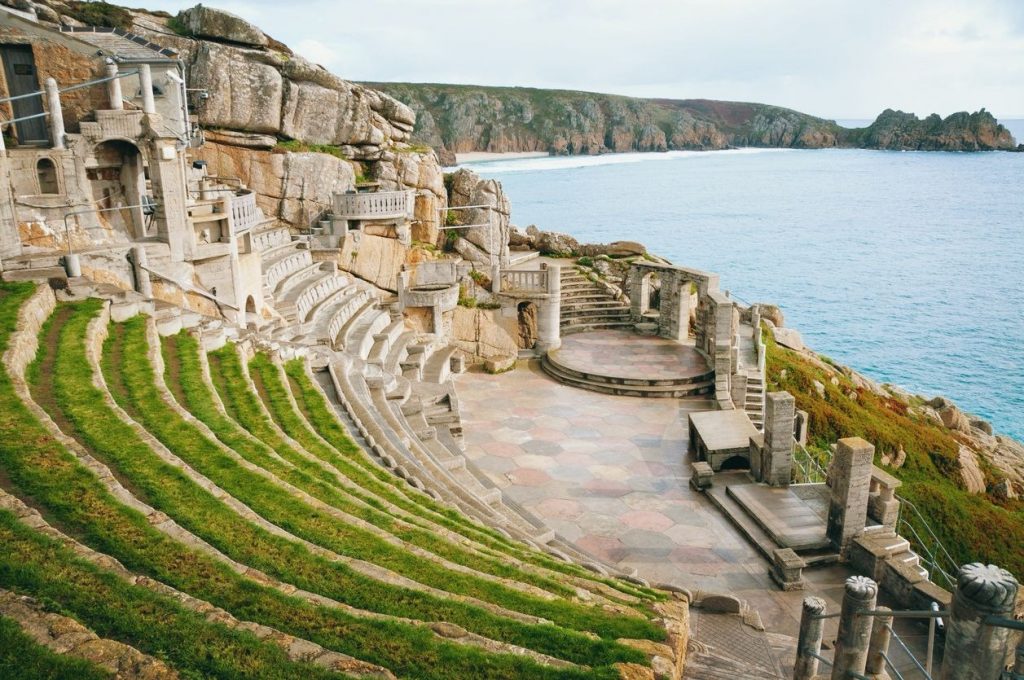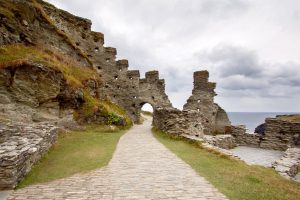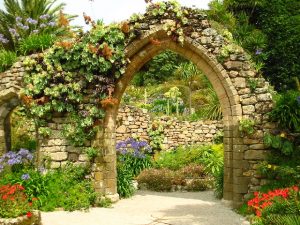Located on the far western tip of England, Cornwall is famous for its mild climate and its breath-taking scenery. Cliffs tumble down into pristine white sands; green countryside stretches out under sunny blue skies, and endless beaches curve around the coastline. Cornwall’s long history has also left its landscape flecked with castles and historic sites that are brought to life through myths and legends.
Cornwall provides a stunning backdrop for activities such as hiking, sailing, and surfing. In recent years, this popular destination has undergone a chic facelift, with contemporary hotels, boutique shops, trendy bars and fine restaurants popping up all over. However, much of Cornwall remains unspoiled and inspires you to go on Enid Blyton-style adventures, exploring forests and beaches armed only with a well-stocked picnic basket.
Here are 11 things you absolutely cannot miss in Cornwall:
1. St Michael’s Mount

Looming over Mount’s Bay, the Abbey on this small tidal island is one of Cornwall’s most iconic sights. Built by Benedictine monks (the same religious order that also constructed a sister abbey at Mont St-Michel in France) during the 12th century, it is connected to the mainland at Marazion via a cobbled causeway.
2. Lost Gardens of Heligan

Located near Mevagissey in Cornwall, these are some of the most popular botanical gardens in the UK. The 200-acre gardens were created in the mid-18th century but were neglected after the First World War. They were restored in the 1990s, and are now a paradise for nature lovers.
3. Minack Theatre

This clifftop amphitheater is carved into a rocky granite outcrop overlooking the town of Porthcurno and the bright blue Atlantic. Built into the 1930s by theatre-lover Rowena Cade, it is now a popular open-air performance space, with plays staged from mid-May to mid-September.
4. Tate St. Ives

The southwestern outpost of the renowned Tate Museum recently underwent a major transformation, adding almost 600 square meters of galleries, and new studios. It exhibits the best of modern Cornish creativity and receives over 250,000 people each year
5. Tintagel Castle

This medieval stronghold is located near the village of Tintagel in North Cornwall. However, it has been occupied since Roman times and once served as a residence for Cornwall’s Celtic King Mark. The present structure is largely built by Richard, Earl of Cornwall in the 1230s. Clinging to black cliffs, this fairy-tale castle is perhaps most famous as the legendary birthplace of King Arthur.
6. The Eden Project

The giant biomes of the Eden Project in St Austell are home to the largest greenhouses in the world. Built to mark the start of the new millennium, the many biomes maintain all kinds of ecosystems. The Rainforest Biome, with its banana trees and stinking rafflesia flowers, and the cacti and soaring palms of the Mediterranean Biome are just two of these. This modern architectural wonder explores issues of environment and conservation.
7. Land’s End

Located near Penzance in the village and parish of Sennen, this is the western-most point of mainland Britain. From its 200 foot high cliffs that abruptly all away into the sea, you can gaze out into the restless Atlantic Ocean. If you’re lucky, the basking sharks, seals, and dolphins that live around here may put in an appearance.
8. Cornwall’s historic mining areas

Made famous by Winston Graham’s Poldark novels, these historic mines were once the major source of tin for Georgian Britain. In 2006, they were protected as a UNESCO World Heritage Site.
9. Isles of Scilly

Located about 30 miles off the coast of Cornwall, this island archipelago is heated by the gulf stream and has an almost tropical air. While the largest island is St Mary’s, perhaps the most popular is the privately owned Tresco Island. Don’t miss the Tresco Abbey Gardens, an oasis of palm trees and exotic plants. It’s home to over 20,000 plants from 80 countries over the world.
10. Trebah Garden

This 26-acre subtropical garden on the Helford River, near Mawnan, dates back to the 1830s. The beautiful informal gardens are full of gigantic rhododendrons, gunnera and jungle ferns. It even has a waterfall that spills down to a private beach. Polgwidden Beach, at the foot of Trebah Garden, was used to launch the assault on Omaha Beach in Normandy during the Second World War.
11. North Cornwall Beaches

There are many picture-perfect Cornish beaches. The white sands at Porthcurno and the abundance of coves around Helford make them the most popular. However, St Ives Bay and Lamorna Beach are also quite spectacular.
With some of the highest year-round temperatures in Britain, you can visit Cornwall at any time of year, though it is warmest from June to August. However, to avoid the summer crowds and still experience the sunshine, it best to go in the spring.


